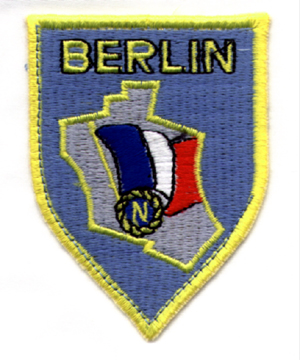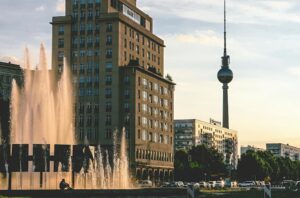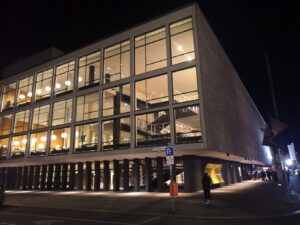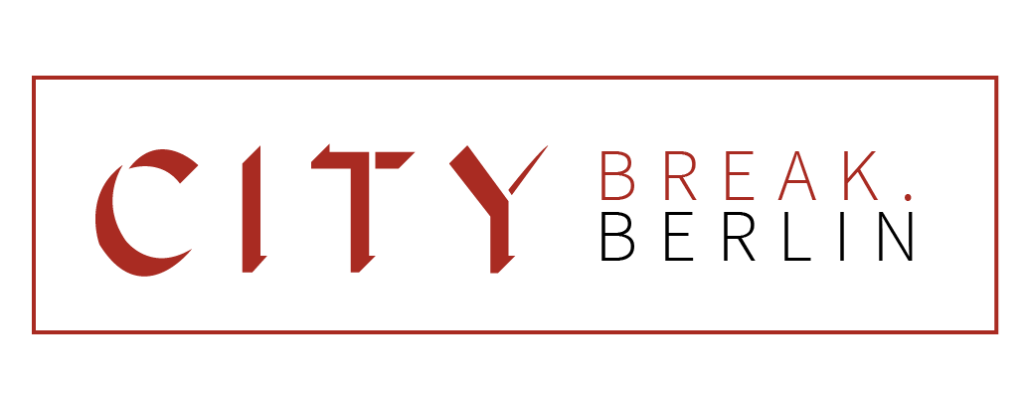The French in Berlin after the War
It’s no secret that Berlin was divided into four occupation zones, American, British, Soviet, and French, after the war. But, you might ask, why did France get a sector of Berlin at all? Considering France had been defeated and occupied by Nazi Germany in 1940, their inclusion might seem surprising. Let me take you through the fascinating story of the French sector in Berlin and what remains of it today.

Photo: BajanZindy
Why the French Got a Seat at the Table
Despite France’s defeat and occupation in 1940, several factors led to their eventual role in post-war Germany.
First, France had maintained a government in exile and the Free French Forces under Charles de Gaulle had participated in the Allied war effort. After the liberation of Paris in August 1944, France was recognized as one of the victorious Allied powers.
Second, the other Allied powers, particularly the United States and Britain, wanted France as a strong partner in post-war Europe to help contain potential Soviet expansion. Giving France a zone of occupation legitimized their status as a major power.
Finally, practical considerations played a role. The Soviet Union was to occupy eastern Germany, while the western Allies would control the west. France’s participation helped distribute the administrative burden of occupation.
The French sector was actually carved out of what was initially planned as part of the British zone, reflecting the fact that France was added late to the occupation arrangement. Despite what I just outlined, there were some in the Western camp who were not too keen on bringing the French in. Politics, as usual, is never far away in Berlin’s history.
The French Sector Boundaries
The French sector occupied the northwestern part of Berlin and included the following neighborhoods:
Wedding: A working-class district with industrial heritage Reinickendorf: Including the scenic area around Tegel Lake Tegel: Home to Tegel Forest and later Tegel Airport Charlottenburg-Nord: The northern part of the elegant Charlottenburg district
The French sector bordered the British sector to the south, the Soviet sector to the east, and extended to the Berlin city limits in the north and west. While smaller than the American and Soviet sectors, it still encompassed significant portions of the city.
Visiting the French Legacy in Berlin Today
If you’re interested in exploring the French presence in Cold War Berlin, there are several places to exlore.
Quartier Napoléon
The Quartier Napoléon was located in the Wedding district at Rue Napoléon (now called Nehringstraße) and served as the headquarters for the French military forces in Berlin from 1945 until their withdrawal in 1994. The complex covered a significant area between what is now Müllerstraße, Edinburger Straße, and Seestraße.
The main entrance gate to the Quartier Napoléon is situated at Edinburger Straße 106. This distinctive gate features two stone pillars topped with decorative elements and a metal arch connecting them. The gate was constructed in the late 1940s as part of the establishment of the French military presence.
The headquarters building itself was located at Edinburger Straße 106-128. This multi-story structure served as the administrative center for French forces in Berlin and housed various military offices. The building complex included several wings and courtyards typical of military installations of that era.
After the French military withdrawal, parts of the Quartier Napoléon complex were repurposed. Some buildings have been converted to civilian use, including residential apartments and commercial spaces. The Centre Français de Berlin, located nearby at Müllerstraße 74, now serves as a cultural center maintaining the Franco-German connection in the area.
While much of the former military complex is not open for public tours, the entrance gate remains visible from the street as a tangible reminder of the French military presence during the Cold War era. The area around the former Quartier Napoléon has been integrated into the urban fabric of modern Berlin, though some architectural elements still reveal its military past.
Tegel Airport
The removal of Tegel Airport in recent years from active service is a great tragedy, as any Berliner or frequent visitor can tell you. Not only was it a convenient place to arrive and depart, the airport also has an interesting history tied to the French presence in Berlin.
The airfield was initially constructed as a response to the Berlin Blockade of 1948-1949. French military engineers began building the airfield in August 1948, completing the runway in just 90 days as part of the Allied effort to maintain air access to West Berlin.
The iconic hexagonal main terminal building wasn’t constructed until much later. Designed by German architects Meinhard von Gerkan and Volkwin Marg, the terminal opened in 1974. The innovative design became known for its efficiency, with its famous «drive to your gate» concept that allowed passengers to walk minimal distances from the entrance to their aircraft. It was really wonderful, as I can personally attest to!
The airport was initially operated by the French military but later transferred to joint American, British, and French control. After German reunification, it became one of Berlin’s primary commercial airports until its controversial closure in November 2020. The site is being redeveloped and has fulfilled various functions in recent years, including being a major vaccine distribution center during the Covid crisis.
Centre Français de Berlin
Originally built as the Centre Culturel Français in 1961, this building on Müllerstraße in Wedding served as a cultural bridge between French troops and Berlin residents. Today, it continues as the Centre Français de Berlin, hosting cultural events, language courses, and exhibitions about Franco-German relations.
Cité Foch
This residential area in Reinickendorf was built specifically for French military families and named after Marshal Ferdinand Foch, who contributed greatly to French victory in the First World War. With its distinctive architecture and layout different from typical Berlin neighborhoods, the area retains its French character. Walking through the streets, you’ll notice French street names and building styles.
French Military Cemetery
Located in Reinickendorf, this cemetery contains the graves of French soldiers who died during their service in Berlin, serving as a reminder of the French military presence during the Cold War years.
What did Berliners think of the French Occupation during the Cold War?
The French presence in Berlin had a distinctive character compared to other occupying powers. Initially, relationships between French forces and Berliners were strained, as with all occupation forces immediately after the war. However, several factors shaped how Berliners perceived the French occupation:
The French maintained a smaller military footprint than the Americans or Soviets, with approximately 3,000 troops stationed in their sector. This resulted in a less dominating military presence in everyday life for residents.
Unlike the more ideological approaches of American and Soviet forces, the French emphasized cultural diplomacy as a cornerstone of their occupation strategy. They prioritized establishing cultural institutions that would build bridges between French and German communities. This was in stark contrast to the way the French approached the defeated (but never occupied) Germans after the First World War.
The French administration was perceived as taking a somewhat less confrontational approach to Cold War politics. While firmly aligned with the Western Allies, France sometimes pursued its own diplomatic path, particularly after Charles de Gaulle withdrew French forces from NATO’s integrated military command in 1966, while remaining in the alliance itself.
The French impact on Berlin went beyond military occupation. They brought their cuisine, films, and their philosophy of life to the city, establishing cultural programs that influenced Berlin’s intellectual scene.
The French occupation authorities established libraries, organized art exhibitions, and supported theater productions. This cultural diplomacy helped improve relations with local Berliners in the sometimes tense Cold War environment.
French films, for example, were regularly screened at theaters in the French sector, introducing Berliners to directors like Jean Renoir and Jacques Tati. Cafés serving French pastries and restaurants offering French cuisine sprang up, some of which continue to operate today.
The End of the Occupation and Beyond
The French military presence in Berlin continued until the fall of the Berlin Wall in 1989 and German reunification in 1990. The final French troops left Berlin in 1994, marking the end of nearly five decades of presence in the city.
Now with the EU and full integration with Europe, the Cold War past sometimes seems a distant and fading memory, entirely irrelevant to today’s vibrant intercultural exchanges. But a walking tour through the old French areas of the city reminds us that Berlin’s complex past, and an entirely different way of life, are never too far away.




